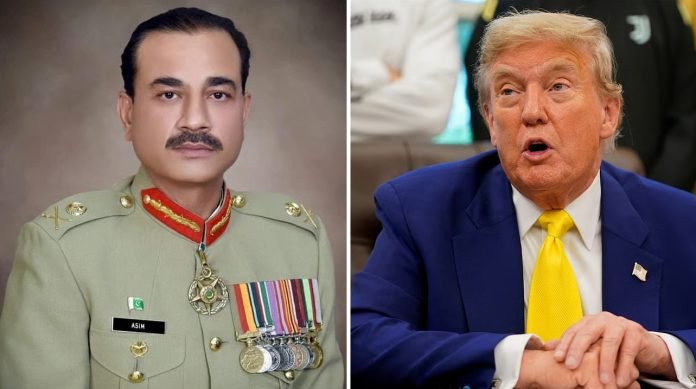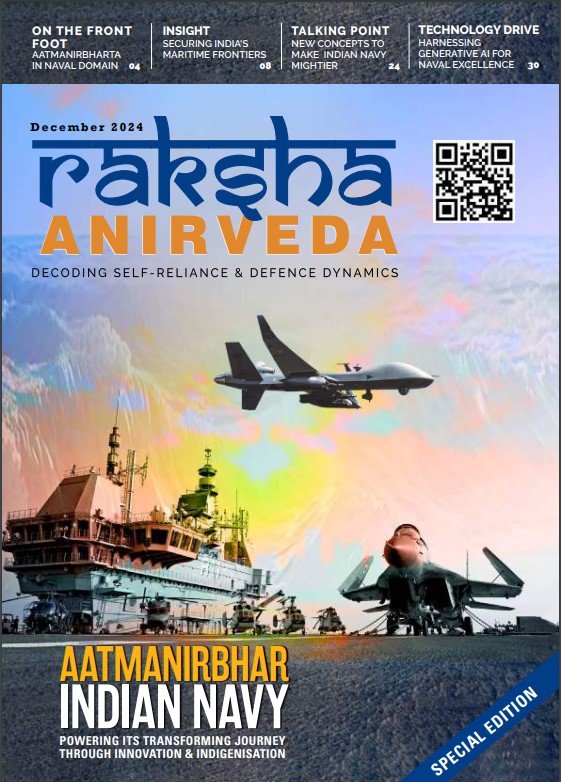Field Marshall Asim Munir, the architect of Pakistan’s terrorism factory, met President Trump over a luncheon meeting and is also expected to meet Secretary of State Marco Rubio and Defence Secretary Pete Hegseth during his official five-day trip to the US. There’s something unmistakably symbolic, and at the same time uncomfortably strategic, about these meetings and their timings. The context is both Op Sindoor and Op Rising Lion. It’s not just a personal invitation. It’s a signal. A signal India should stop misreading. While New Delhi talks the language of partnership, Washington speaks the dialect of pragmatism. And in that dialect, Pakistan continues to enjoy a special status — not because of shared values, but because of shared utility.
General Michael Kurilla, head of the US Central Command, made it all official. Testifying before the House Armed Services Committee on June 10, General Kurilla strongly advocated for maintaining strategic ties with both India and Pakistan, asserting that the US must not view its South Asia policy through a zero-sum lens. For India, that sounded like balanced diplomacy. But in practice, it revealed something deeper — India is being told that it is not the only suitor in the room and described Pakistan as a “phenomenal counter-terrorism”.
“We need to have a relationship with Pakistan and with India. I do not believe it is a binary switch that we can’t have one with Pakistan if we have a relationship with India,” he said. “We should look at the merits of the relationship for the positives that it has.”
To some, this isn’t news. But to those still operating under the impression that India’s rise on the global stage would automatically recalibrate Washington’s loyalties, this statement — and the military embrace of Pakistan — should be sobering.
A Geography That Sells
Pakistan remains geographically indispensable to the United States. It is a base without being a base, a battlefield without boots. The US no longer has a physical presence in Afghanistan, but it hasn’t given up its interest in the region. From the Iranian frontier to Xinjiang’s periphery, from Taliban-controlled Kabul to the underbelly of Central Asia, Pakistan’s geography is critical for surveillance, logistics, and intelligence-gathering. It provides the US with a backdoor into theatres it cannot enter directly anymore.
General Kurilla praised Pakistan’s role in fighting ISIS-Khorasan. There was mention of intelligence sharing and extradition of operatives. But this is the same Pakistan that provided sanctuary to Osama bin Laden at a stone’s throw from its military academy. The same country that enabled the Taliban’s revival in Afghanistan and has harboured Haqqani operatives for decades.
“We need to have a relationship with Pakistan and with India. I do not believe it is a binary switch that we can’t have one with Pakistan if we have a relationship with India… We should look at the merits of the relationship for the positives that it has,” says General Michael Kurilla, head of the US Central Command
Why then does the US continue to speak the language of cooperation with Rawalpindi? The answer is simple. Because it works. As a US ally, Pakistan closed the air and land routes with Iran post-Op Rising Lion. Its geographical utility to the US is not just Afghanistan but also Iran. These are realities for the furtherance of the US national interests. Everything else can be set back.
The Pakistan military offers a degree of reliable duplicity that Washington has learned to live with. One hand fights, the other feeds. The Americans don’t condone it, but they live with it. It is better, in their view, to deal with a country that both creates and contains threats than one that simply protects them.
India, the Customer, Not the Ally
On the other hand, India is treated very differently — more as a rising market than a strategic partner. Yes, there is dialogue. Yes, there are military deals. However, the transactional character of this relationship is often camouflaged under the rhetoric of shared values.
Take the Apache helicopter deal, or the GE engine partnership. Contracts have been signed. Money has been paid. Yet, delays continue and supply chains suffer. Source codes are withheld. Technology transfer remains evasive. The US wants India to be a defence customer, not a competitor. And, certainly not a sovereign producer. Washington sells shiny systems, but often without the screws.
This isn’t just about bureaucratic delays. It’s a symptom of how the US views India — not as a security provider, but as a revenue-generating entity in the Indo-Pacific matrix. The so-called Quad partnership and Indo-Pacific strategies often place India on the podium, but rarely in the war room.
Western intelligence tolerates terrorists as long as they’re useful. Pakistan’s terror infrastructure has been subtly repurposed over the years, which is why the US continues to engage its military so closely. It’s about maintaining access to the most unpredictable, unregulated black market of kinetic actors
So when an American general says he values Pakistan and India equally, he means it — but not in the way New Delhi thinks. For Washington, Pakistan is the tip of the spear for covert and kinetic operations. India is the spine of the economic order. Both are important. But only one is militarily indispensable.
The ‘Terror Utility’ Factor
One of the biggest misunderstandings in India’s strategic community is the assumption that the US wants to dismantle Pakistan’s terror networks. That may be true in part, when it suits them. However, history shows that these very networks have often been used as deniable assets by multiple powers.
Think of Ilyas Kashmiri, a former SSG operative turned jihadist. He wasn’t just targeting India — he was operating in the Caucasus, in Dagestan, in places where American or allied interests needed plausible deniability. The same applies to elements of Lashkar-e-Taiba or Jaish-e-Mohammed, who have periodically shifted focus from India to Afghanistan, Syria, or elsewhere.
Western intelligence communities, American included, don’t love terrorists. But they tolerate them when they’re useful. Pakistan’s terror infrastructure, far from being dismantled, has been subtly repurposed over the years. And that is why the US continues to engage its military so closely. It’s not just about countering ISIS-K. It’s about maintaining access to the most unpredictable, unregulated black market of kinetic actors in the region.
To assume that Washington doesn’t know this is to insult its intelligence community. To think they will abandon Pakistan for India’s benefit is to insult our own.
Red Lines and Blue Illusions
What then should India do?
First, India must accept that no major power is going to put its weight behind Indian interests unless India is willing to assert them on its own. Strategic respect is not gifted; it is earned and enforced. Operation Sindoor was an important lesson in that regard. The military objectives were achieved with clarity. But the narrative space? It was lost globally.
If India wants to be taken seriously, it must stop assuming that economic growth alone will reshape global loyalties. The strategic community in India must shake off the illusion that the West will do what is morally right. They will do what is strategically useful. India must fight its wars alone
The United States claimed to have brokered a ceasefire. The IMF, ADB and World Bank fast-tracked funds to Islamabad. Pakistan’s image was rehabilitated, not punished. At the UN, Pakistan was even given symbolic positions in counter-terrorism committees. Where do these funds go? Its 20% hike in defence budget and aid to terrorists like the 14 crore gifted to global terrorist Masood Azar.
What does this tell us?
That operational victories on the battlefield must be complemented by diplomatic dominance in the global theatre. If Pakistan can wage jihad and still get invited to US Army Day, India must learn to fight wars in both physical and psychological domains.
Second, India must stop relying on Western outrage against terrorism. There won’t be any. At best, there will be token statements. At worst, veiled neutrality. If India wants to deter Pakistan, it must make deterrence credible through action, not appeals.
And third, geography must be reimagined. The only reason Pakistan continues to be relevant is because it sits at the crossroads of Central and South Asia. If India wants to change this equation, it needs to build alternative routes, shape new alliances, and — if required — create the strategic justification for the kinetic redrawing of this geography.
The United States will not abandon Pakistan. Not when it continues to offer strategic depth, intelligence utility, and an established military architecture tailor-made for covert partnerships. India must therefore accept that Western allegiance is conditional, and sometimes even contradictory.
Conclusion: Define, Don’t Wait
A rising power doesn’t wait for acknowledgement. It defines itself by action. If India wants to be taken seriously, it must stop assuming that economic growth alone will reshape global loyalties. The strategic community in India must shake off the illusion that the West will do what is morally right. They will do what is strategically useful. They have always done it in the past, and history is a testimony to the same. India will have to fight its wars alone.
The author, a PVSM, AVSM, VSM has had an illustrious career spanning nearly four decades. A distinguished Armoured Corps officer, he has served in various prestigious staff and command appointments including Commander Independent Armoured Brigade, ADG PP, GOC Armoured Division and GOC Strike 1. The officer retired as DG Mechanised Forces in December 2017 during which he was the architect to initiate process for reintroduction of Light Tank and Chairman on the study on C5ISR for Indian Army. Subsequently he was Consultant MoD/OFB from 2018 to 2020. He is also a reputed defence analyst, a motivational speaker and prolific writer on matters of military, defence technology and national security. The views expressed are personal and do not necessarily carry the views of Raksha Anirveda






